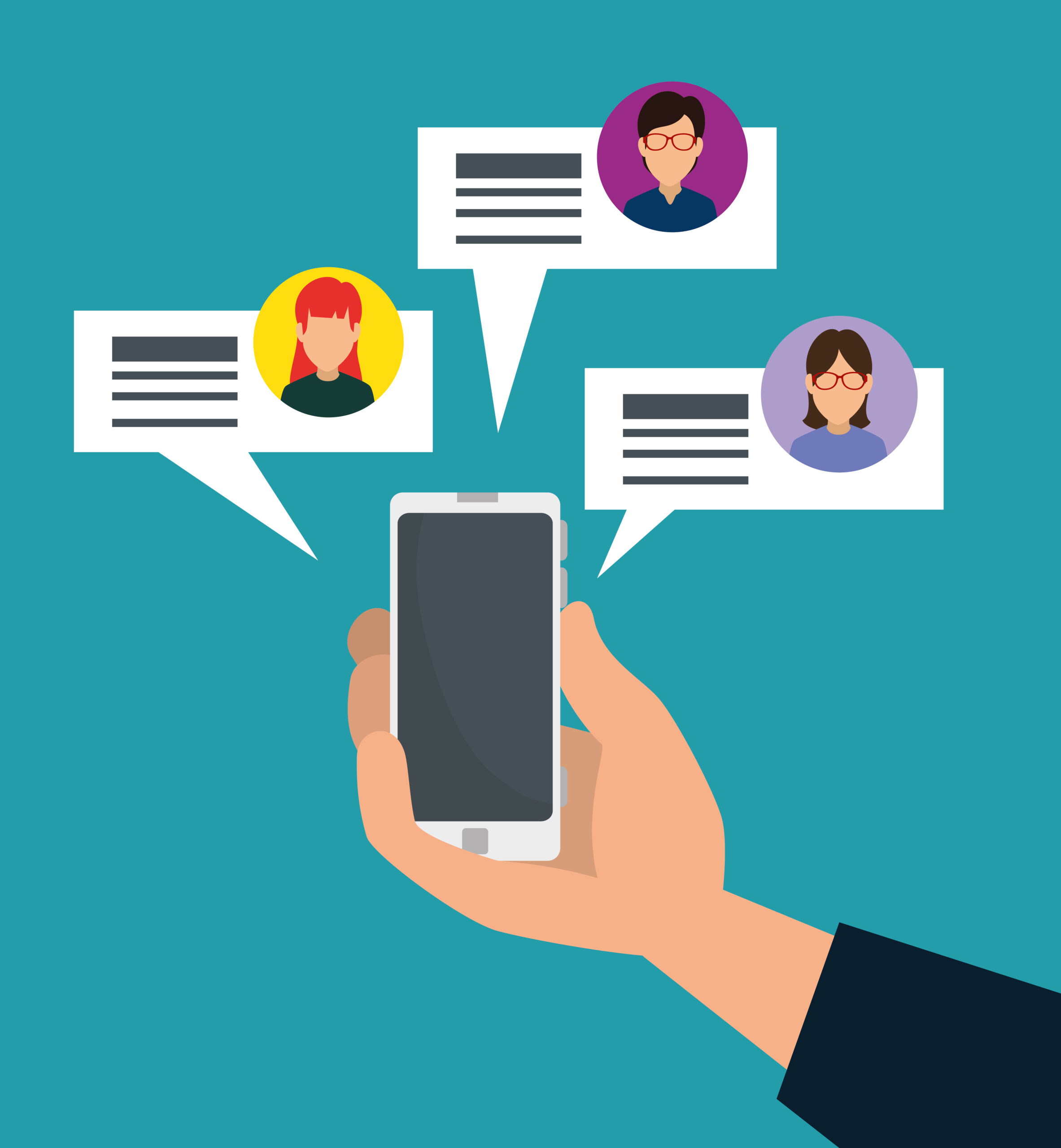Imagine being able to reach thousands of customers’ mobile phones with a single message, and knowing those messages are opened almost immediately—no scrolling past dozens of other distractions. That is the benefit of mass communication through SMS to both big and small enterprises. In this paper, we will take a plunge into the reasons why this style of doing business redefines business messaging, the reasons why it is so effective and how you can make it work anywhere in the world. We’ll also highlight how global leader SMSala simplifies how brands connect with customers at scale.
What is Mass Communication via SMS?
In essence, mass communication through SMS implies mass delivery of text messages (SMS) to a specific set of users. SMS is direct and tends to be spotted quickly unlike one-to-one texts or emails that are stuck in inboxes. Imagine a virtual megaphone in the pocket of every individual–but in such a manner that it would seem personal and relevant but not spammy.
Why does this matter? Mobile phones are almost always available and since an SMS does not make the recipient open an application or a folder, as opposed to sending a message via email or social media. This is supported by the data: The open rates of SMS are reported to be 98% in certain studies. That kind of visibility is rare in digital marketing.
Why Businesses Are Turning to SMS for Mass Communication
Direct Reach and Immediate Engagement
When you send a message via SMS, you’re entering a space people monitor frequently. One source says that 82% of consumers check text notifications within five minutes. For businesses, that means your message doesn’t just arrive—it gets seen.
High ROI and Efficiency
Compared to other channels—email, social media ads—SMS stands out. For example, one blog reported that for every $1 spent on SMS marketing, businesses earned on average $71 in revenue. That kind of return is hard to ignore.
Universal Accessibility
Many marketing tools depend on internet access, specific apps or platforms. SMS works on virtually any mobile phone, any region, any operator. That widens your reach globally.
Perfect for Timely Alerts and Personalization
Need to send an update, alert or announcement quickly? A flash sale starts now, a delivery is arriving in 10 minutes, or a scheduled maintenance is happening tonight. SMS is ideal. And because you can segment your audience—VIP customers, recent purchasers, geographic region—it remains relevant, not generic.
How to Set Up a Mass Communication via SMS Strategy
1. Choose the Right Platform
You will also require a provider that facilitates high volume SMS, international delivery (in the event that you are global), API and clear pricing. As an illustration, SMSala offers messaging infrastructure globally, and it is now easier to initiate mass SMS campaigns on a global scale.
2. Build Clean, Opt-In Lists
Unlike spam texts that annoy recipients, successful mass communication strategies rely on people willingly opting in. Clean lists help your deliverability and maintain trust. One study reported that about 84% of consumers opted into business texts in 2025.
3. Segment Your Audience
Do not fire the same common message to all people. Divide your contacts basing on the behavior, buying history, geography or the extent of interaction. Then customize your message to fit–such as: “Hey [Name], it is time to have your regular maintenance.”
4. Craft Clear and Actionable Messages
SMS messages have limited length. A conversational style, a clear purpose and call to action (CTA). Usage: Your order number 1234 is shipped today. Track here [link]. – “YourBrand”.
5. Time Your Messages Well
When you send matters. Sending at odd hours may reduce engagement. Every behavior of your audience: morning alerts, mid-day offers, evening before appointment reminders.
6. Monitor and Optimize
Utilize delivery rate, open rate (implicitly high in the case of SMS), click-through in case you have a link, conversion and opt-out. One report showed that 45% of businesses had average SMS marketing CTRs of 21-35%. Adjust your message style, timing and audience segmentation accordingly.
Global Use-Cases: Mass Communication via SMS in Action
Retail Flash Sales
A global clothing retailer uses mass SMS to alert VIP members of a 12-hour sale. They segment by past purchase history and geography, send a short message: “12-Hour VIP Sale: Extra 20% OFF. Shop now [link]”. The urgency drives facilitate last-minute urgency and enhance conversion.
Healthcare Reminders of Appointments
One Latin American chain of clinics sends SMS notifications 24 hours prior to the meeting. With an open rate near 98% and cancellation/no-show reduction by 32% in one study. The SMS channel ensures patients are informed and reduces operational waste.
E-Commerce Delivery Alerts
An online store sends messages like “Your parcel #5678 is arriving tomorrow 10-12hr. Track [link]”. This preempts customer queries, improves satisfaction and builds brand trust.
Travel & Hospitality Updates
Airlines and hotels send SMS updates when flights delay or rooms are available early check-in. These messages reach travellers even when roaming or during hotel WiFi disruptions.
Localized Market: Envio de SMS Masivo México
In Mexico, businesses increasingly adopt mass messaging to reach customers across urban and rural areas alike. For instance, a Mexican e-commerce brand uses “envío de SMS masivo México” campaigns to announce seasonal offers to subscribers in Mexico City, Guadalajara and Monterrey. With high mobile penetration and trust in SMS, campaigns show strong engagement. Tailoring messages to Spanish language preferences and local culture drives higher conversions.
Why Mass Communication via SMS Works: The Underlying Psychology
The Mobile Phone Is Personal
People carry mobile phones everywhere. A text appears in the same space as messages from friends and family, giving it a personal feel—even if it’s business-related.
Fewer Distractions
Emails get filtered, social media posts scroll fast, push notifications often ignored. But a text message lands in the same place we check for important messages.
Urgency and Action
SMS conveys urgency—your message is probably being seen now. That leads to faster responses. Studies show SMS response rates can reach 45% versus email’s average 6%.
Trust and Familiarity
SMS has been around for decades—people are comfortable reading texts. When your business uses SMS well (with opt-in, relevant content), it communicates stability and professionalism.
Pitfalls to Avoid When Implementing Mass Communication via SMS
Over-Messaging
Even the best channel fails if used too frequently. A study shows that texting too often is the fastest way to lose subscribers—53% cited that as the reason to opt out.
Generic Content
In case messages seem to be some generic spam where the communication falls flat, then you run a risk of getting no reply or even being reported as spam. Make sure it is relevant by being segmented and personalized.
Neglect of a Regulation and Consent
Various nations have regulations in mass texting. Never send spam to anyone who has not consented to receive it, respect opt-out messages and comply with domestic legislation. The lack of consent kills the brand trust.
Failing to Track and Adapt
You will not be able to monitor delivery and miss some crucial insights. You should constantly improve your strategy using performance statistics.
Poor Timing or Tone
Sending a business promotion at 3 a.m. or using formal language in a casual brand can reduce response. Match message timing and tone to your audience.
The Role of SMSala in Global Mass SMS Communication
When brands decide to adopt mass communication via SMS on a global scale, complexity grows: multiple countries, currencies, carriers, language requirements and compliance rules. That’s where SMSala plays an important role. Being a messaging powerhouse in the world, SMSala provides robust infrastructure, multi-country coverage, API integration and reporting-all of which are aimed at enabling brands to easily carry out mass SMS campaigns. You can reach a few thousand customers in a single country or tens of millions in different continents with the help of SMSala platform which makes it simpler.
A case in point is a multinational retail chain that used SMSala to arrange bilingual English/Spanish SMS promotion in Latin America and the US. They could send personalized messages using the segmentation tools of SMSala, and this led to the campaign conversion by 37 percent compared to the past years.
Developing Your Messaging: Mass Communication through SMS Best Practices
- Keep it short and meaningful. Aim for 160 characters or fewer. Example: “Welcome [Name]! Your 10% coupon: WELCOME10. Redeem at checkout.”
- Personalize when possible. Include recipient first name, reference past behaviour, or location.
- Use a strong CTA. What do you want them to do? Shop now, confirm appointments, track parcels?
- Include unsubscribe option. Respect your audience and preserve long-term trust.
- Time you send. Mid-morning or early evening often work well.
- Test & iterate. Try A/B testing message phrasing, send times, recipient segments.
- Track metrics. Delivery rate, click rate, conversion rate, opt-out rate–all are important.
Measuring Success: Due Measures that Count
The main measures to consider in the assessment of your mass communication through SMS campaigns are as follows:
- Delivery rate: the number of messages that were delivered to the network.
- Connection click-through rate (CTR): In the case that you post a link.
- Conversion rate: the amount of recipients who performed the intended action.
- Unsubscribe rate: unsubscribed.
- Return on investment (ROI): Number of dollars earned/number of dollars spent. Some studies show that SMS marketing has a high ROI of up to 7000% (i.e. 71 revenue of 1 dollar spent).
The Future of Mass Communication through SMS
SMS can still be considered a formidable opponent even in newer channels, like messaging apps and push notifications. A number of trends indicate future topicality:
Smartening with AI and automation: intelligent scheduling, personalization, and responding tools.
Improvements in Rich Communication Services (RCS): more media, interactive messages.
International growth: increasing numbers of companies entering into the mass SMS market in Latin America, Asia and Africa.
Omnichannel coordination: SMS connected with email, voice, apps to convey messages.
Greater compliance and regulation: the businesses will have to be more cautious and also more advanced.
Concisely, mass communication through SMS is not a relic, but it is developing, mighty and remains one of the quickest modes of communicating to people.
Start your First Mass SMS Campaign
State your objective: Promotion, reminder or update customers?
Outreach Strategy: Select your audience to respond.
Write a message: brief, specific, do not postpone.
Time to send an email: It depends on your audience, time and habits.
Reliable platform: In case you want to reach the whole world, you can ask a partner such as SMSala.
Send and track: Track delivery, clicks, conversions.
Refine and repeat: Rely on the insights to start-off the next campaign.
Conclusion
Mass communication through SMS provides a direct, strong and cost effective method of businesses to reach out to their customers in various parts of the world, when done wisely. With real-time notifications all the way to the promotion blasts, the channel is both immediate and personalized in a manner that few other tools can rival. Having high open and response rates, universal availability, and good ROI, it is understandable why numerous brands are spending on text-based outreach. And by collaborating with a solution provider such as SMSala, you can have the infrastructure and expertise to scale comfortably. Begin to use SMS not as a tool- but as a business strategy channel that produces results.



